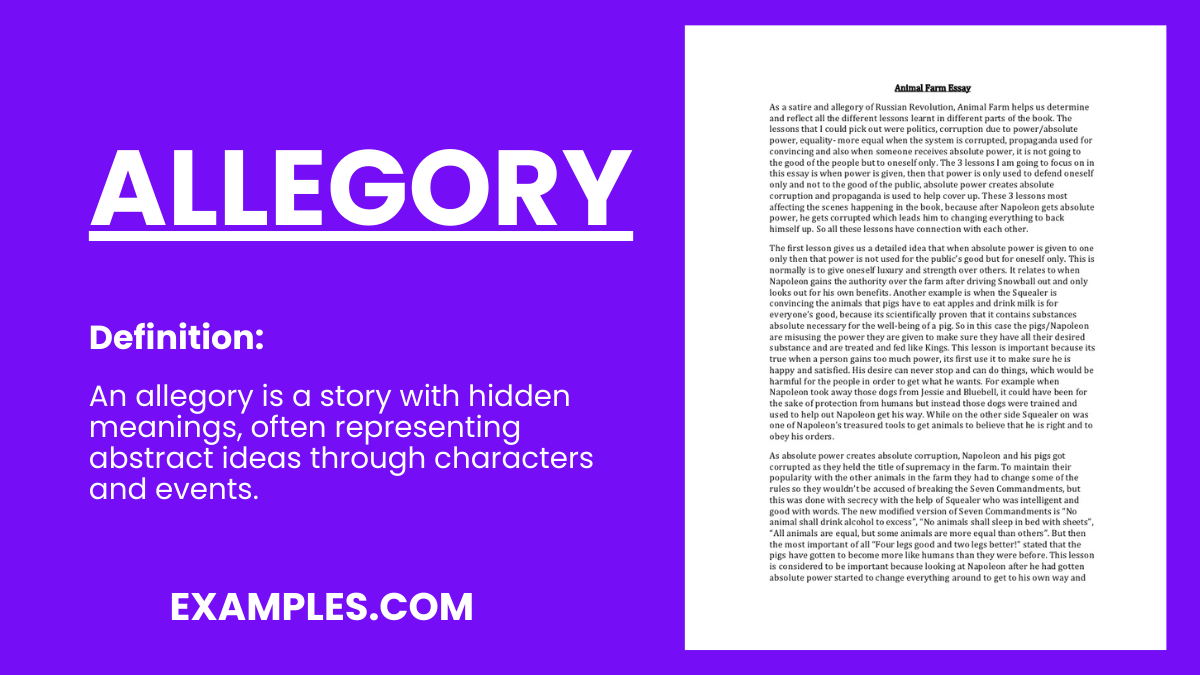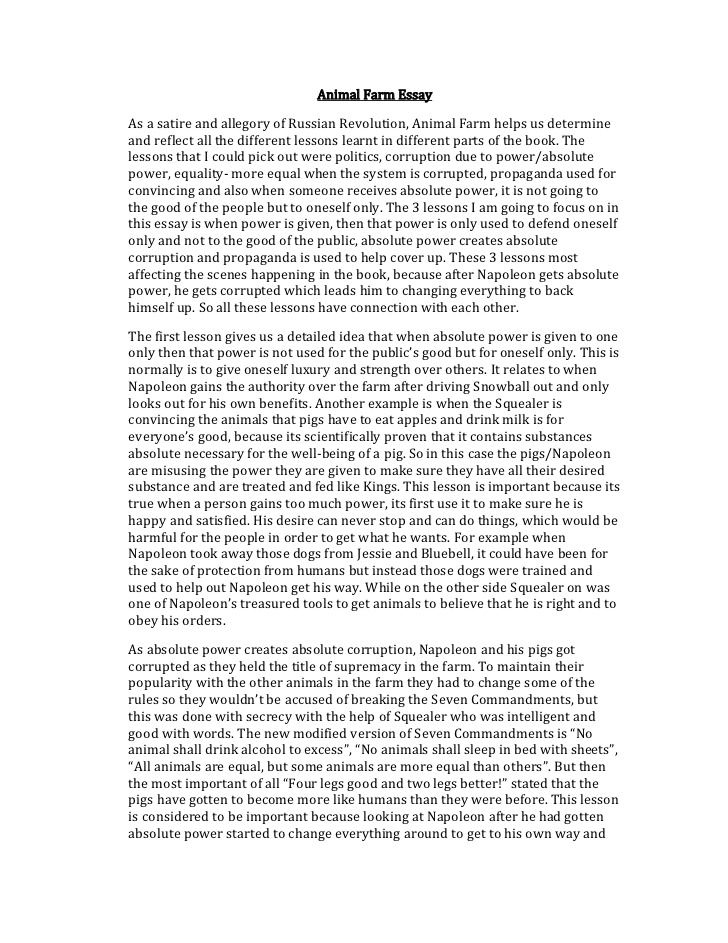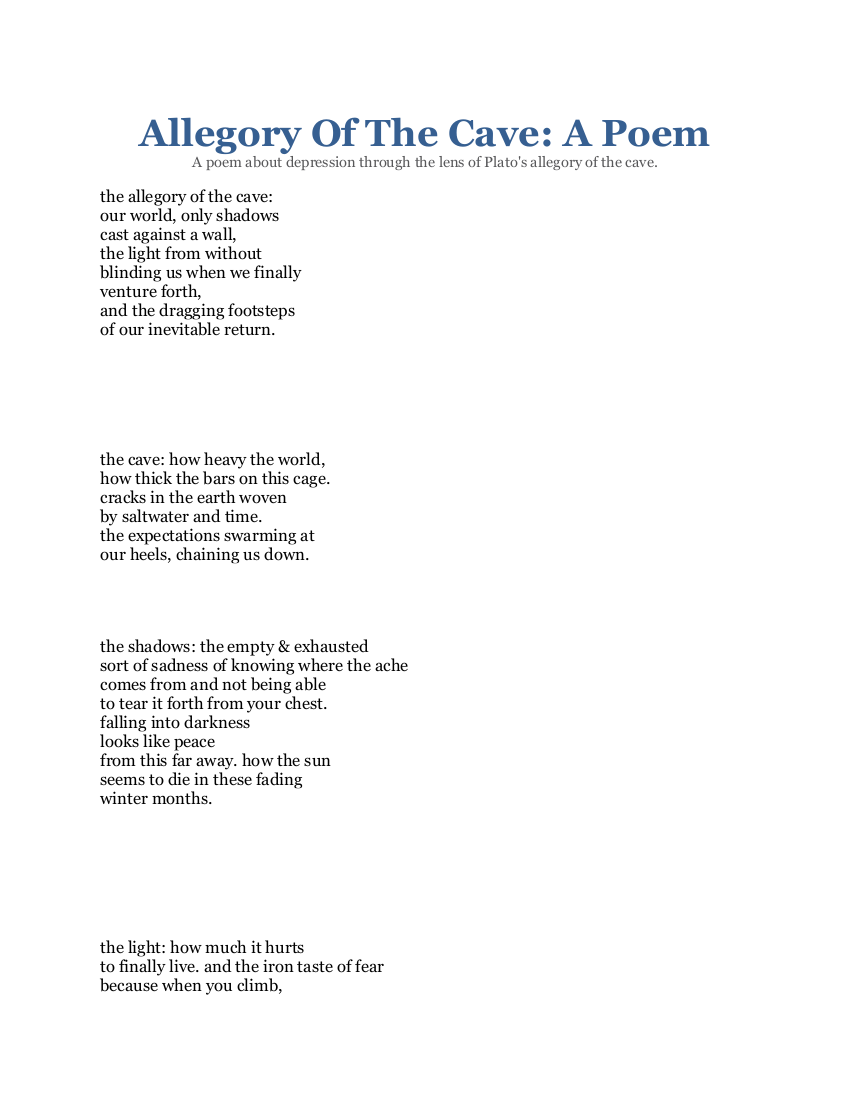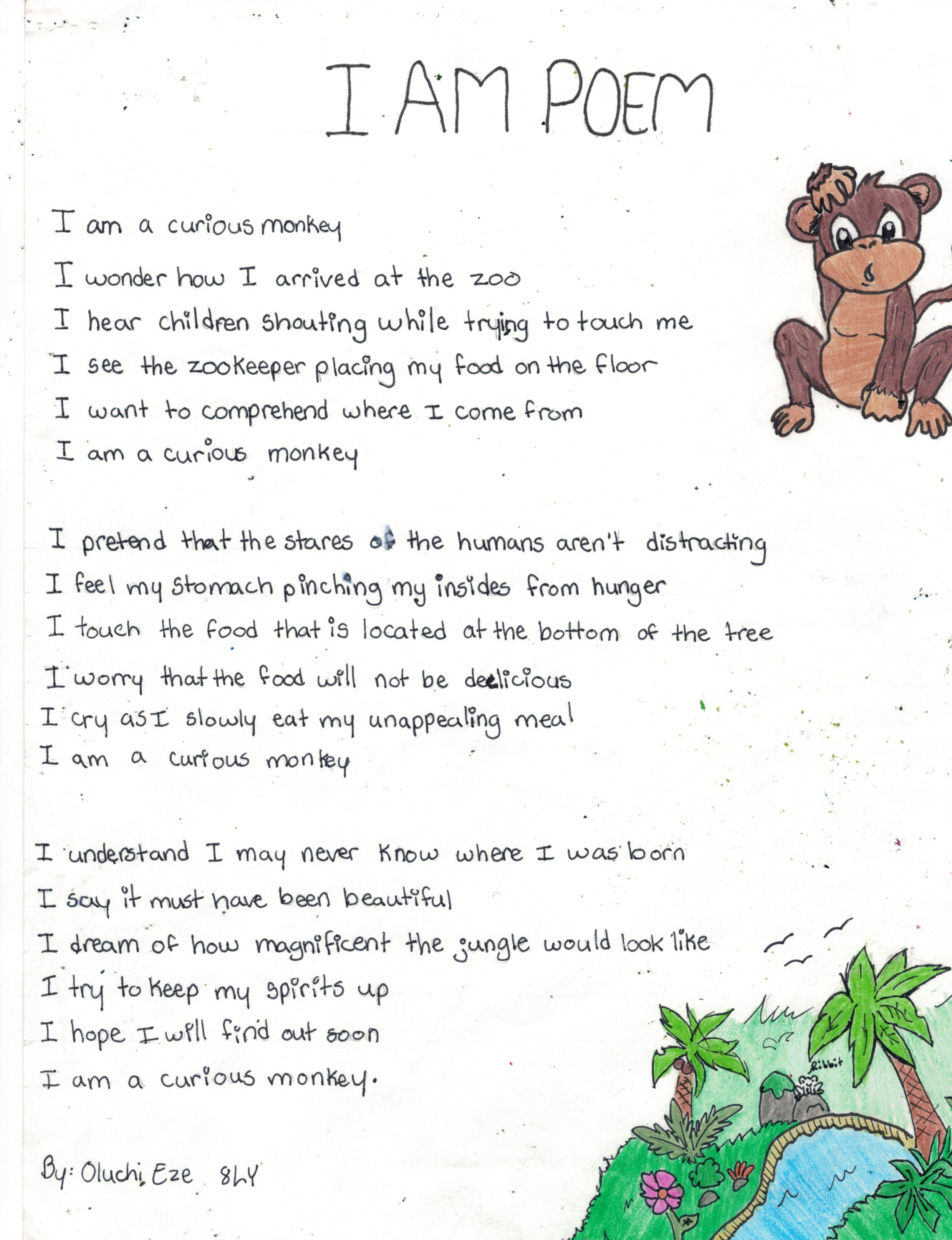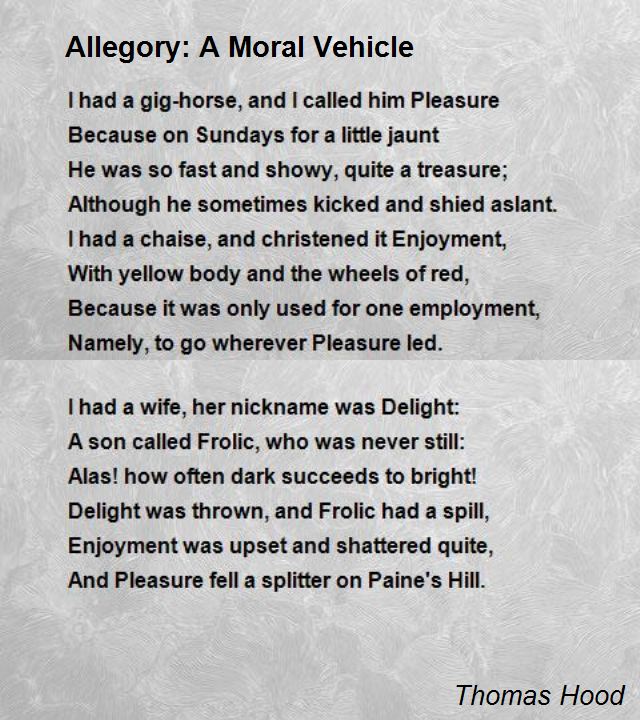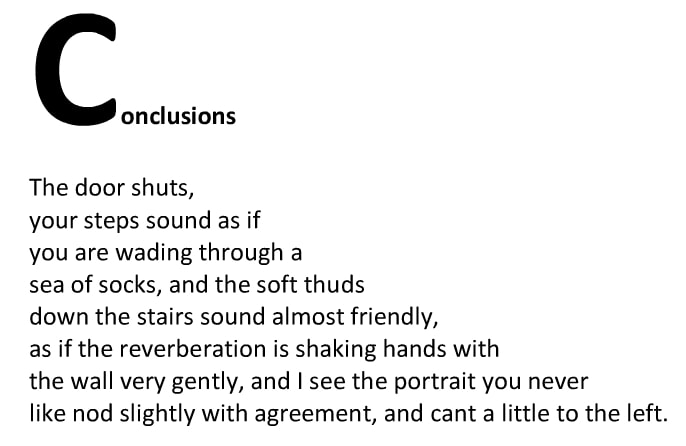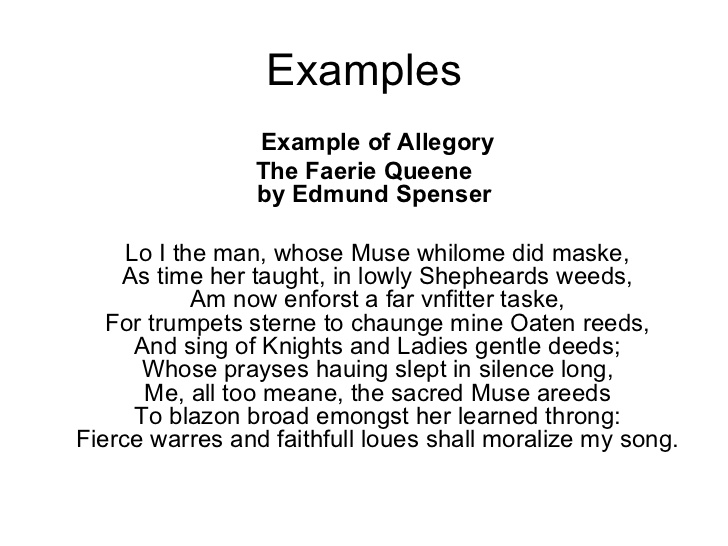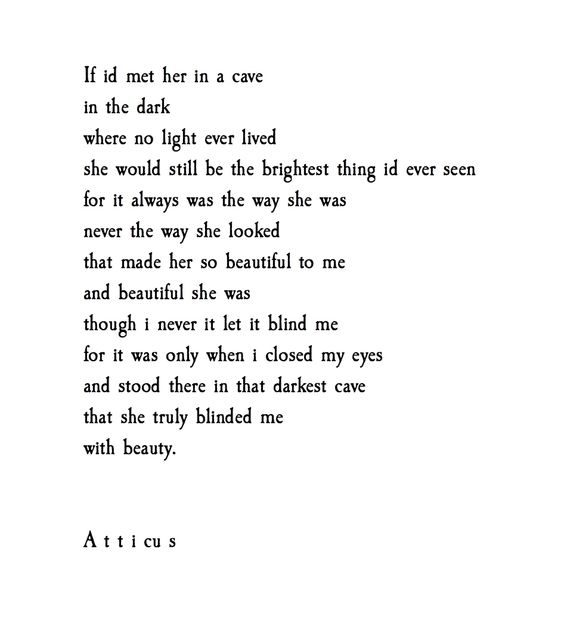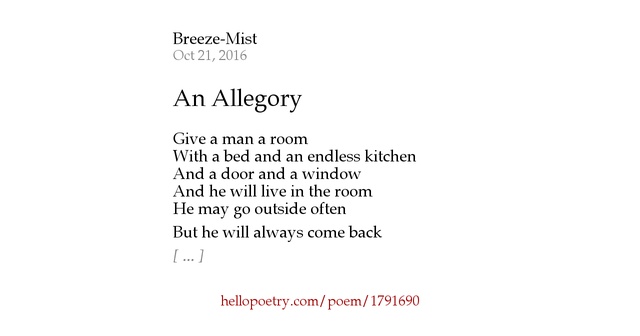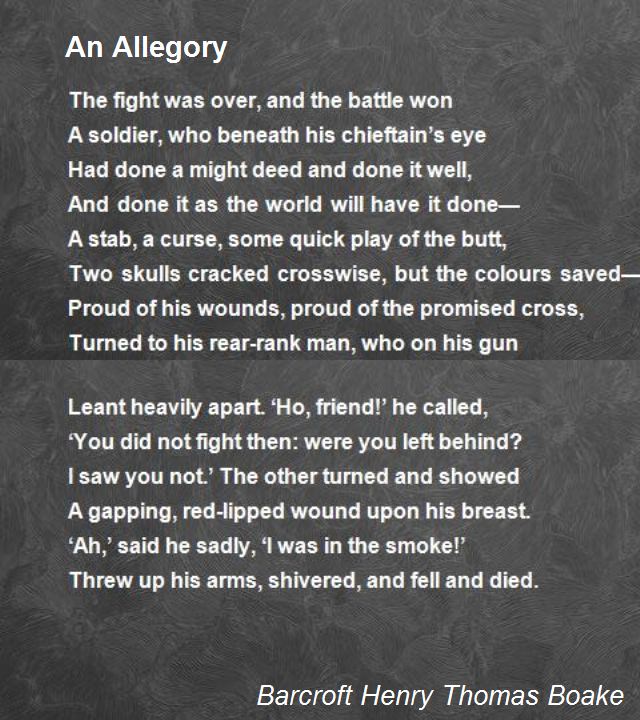Allegory
There are many challenges that come with being a writer. Though writing is a free form of expression, there are some things that aren’t mean to be written on print as they may cause controversy one way or another. This is why many authors use allegory to express their principles and ideas in ways that are far from literal. However, allegory is more than just a literary device, as it has also become a key instrument in many of the most popular literary pieces in history. You may also see poetry writing.
What is Allegory?
Allegory is a storytelling technique where characters, events, or places represent deeper meanings or abstract ideas. It’s more than just a simple story – it’s like a coded message. In an allegory, everything in the story stands for something else, usually moral, spiritual, or political ideas. Unlike simple metaphors, an allegory spans throughout the entire narrative, creating a parallel that reflects real-life issues, moral lessons, or critiques of societal structures. Each element oAllegoryf the story – be it a character, an object, or an event – is purposefully used to represent broader themes, often relating to moral, political, or philosophical ideas. A classic example of allegory is George Orwell’s “Animal Farm,” where the farm and its inhabitants symbolize the events and ideologies of the Russian Revolution, making a broader statement about power and governance.
Best Example of Allegory
One of the best examples of allegory in literature is George Orwell’s “Animal Farm.” This novel is a powerful allegory of the Russian Revolution and the subsequent rise of Stalinism in the Soviet Union. In the story, a group of farm animals rebel against their human farmer, hoping to create a society where animals can be free, equal, and happy. However, the rebellion takes a dark turn when the pigs, who assume leadership, become as oppressive as the humans they replaced.
The characters and events in “Animal Farm” represent real-life figures and occurrences from the Russian Revolution. For instance, the pig Napoleon symbolizes Joseph Stalin, while another pig, Snowball, represents Leon Trotsky. The gradual corruption of the animal leadership and the perversion of the original revolutionary principles depict the betrayal of the revolution’s ideals and the emergence of a totalitarian regime.
“Animal Farm” is celebrated for its ability to present complex political and historical truths through a simple and accessible narrative, making it a quintessential example of allegory.
Short Allegory Examples
- The Tortoise and the Hare (Aesop’s Fables): This simple yet profound story is an allegory for the virtues of determination and persistence over arrogance and overconfidence. The slow-moving tortoise, representing steadiness and persistence, eventually wins the race against the fast yet overconfident hare.
- The Boy Who Cried Wolf: Another classic fable, this story serves as an allegory for the consequences of lying. The boy, who repeatedly deceives the villagers into thinking a wolf is attacking his flock, represents deceit. When a wolf truly appears and he calls for help, the villagers, symbolizing trust, don’t believe him. The story conveys the moral that lying erodes trust and can lead to dire consequences.
- Plato’s Allegory of the Cave: In this philosophical allegory, prisoners in a cave, who can see only shadows cast on a wall, represent people’s limited perceptions of reality. When one prisoner is freed and sees the world outside the cave, he symbolizes enlightenment and the journey to understanding the deeper truths of existence.
- The Little Prince by Antoine de Saint-Exupéry: This story, while appearing as a children’s tale, is an allegory exploring themes of isolation, love, and the loss of innocence. Each planet visited by the Little Prince represents different aspects of society, and his conversations with the various characters symbolize different human behaviors and philosophies.
Types of Allegory
Allegory comes in various forms, each serving a unique purpose in literature and art. Here are some of the main types:
1. Political Allegory
- Description: This type of allegory uses characters and events to symbolize political themes and critiques of government, power, and societal structures.
- Example: George Orwell’s “Animal Farm” is a political allegory for the Russian Revolution and the rise of Stalinism.
2. Moral Allegory
- Description: Here, the allegory is used to convey moral lessons or ethical values, often illustrating the struggle between good and evil.
- Example: The “Pilgrim’s Progress” by John Bunyan, which depicts a spiritual journey reflecting the Christian path to salvation.
3. Religious Allegory
- Description: These allegories represent religious beliefs, principles, or narratives, often to illustrate spiritual truths.
- Example: C.S. Lewis’s “The Chronicles of Narnia” series, where Aslan the lion symbolizes Christ.
4. Mythological Allegory
- Description: This form uses mythological figures and stories to represent deeper truths about human nature and the universe.
- Example: The Greek myth of Prometheus, who stole fire from the gods to give to humanity, symbolizing the human quest for knowledge.
5. Historical Allegory
- Description: Historical allegories use characters and plots to represent historical events or figures.
- Example: Arthur Miller’s “The Crucible,” which, while set during the Salem witch trials, allegorically criticizes the McCarthyism of 1950s America.
6. Personal or Psychological Allegory
- Description: This type focuses on illustrating internal personal or psychological struggles, often representing different aspects of the human psyche.
- Example: Franz Kafka’s “Metamorphosis,” interpreting the protagonist’s transformation as an allegory of alienation and human identity.
100 Allegory Sentence Examples
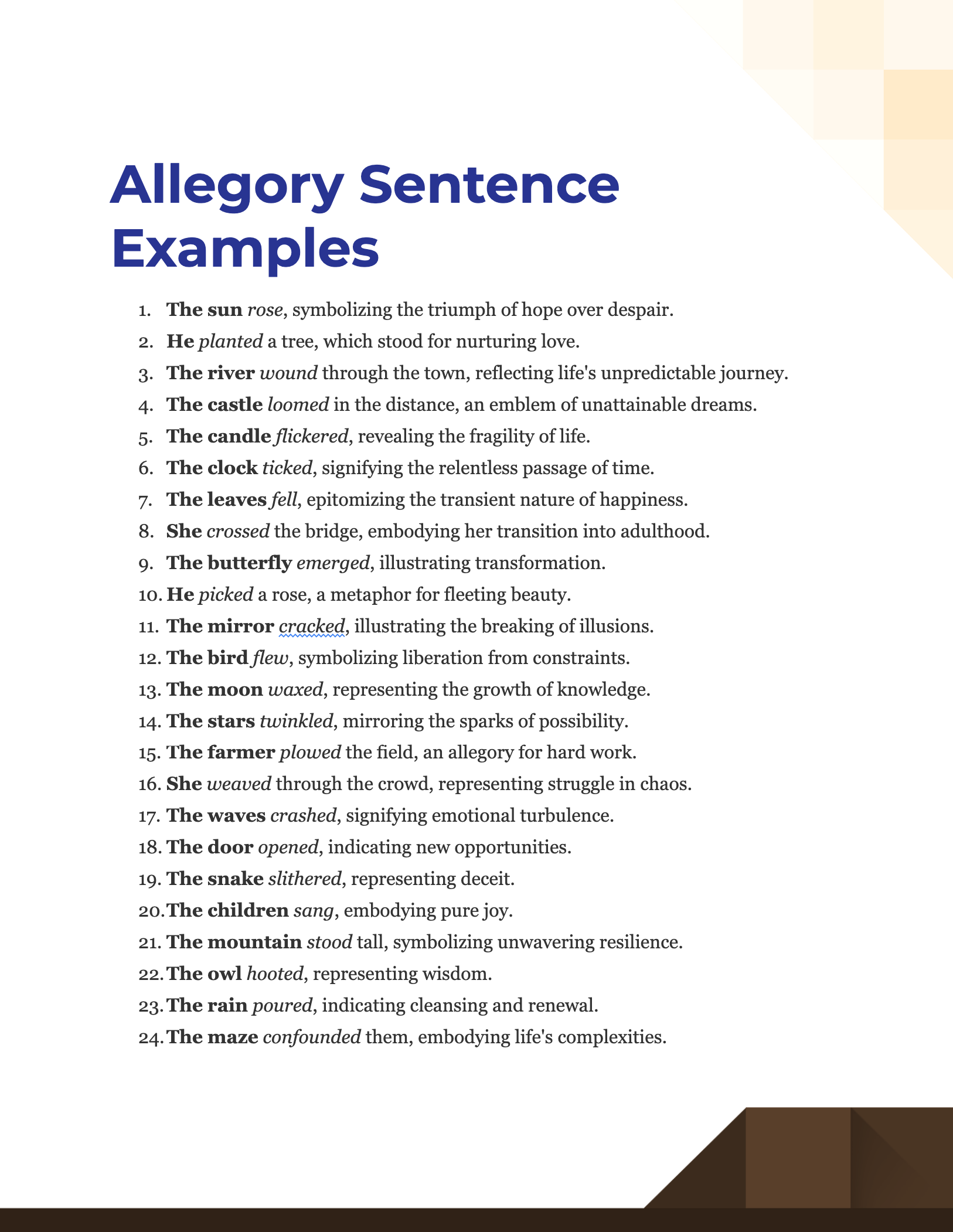
- The sun rose, symbolizing the triumph of hope over despair.
- He planted a tree, which stood for nurturing love.
- The river wound through the town, reflecting life’s unpredictable journey.
- The castle loomed in the distance, an emblem of unattainable dreams.
- The candle flickered, revealing the fragility of life.
- The clock ticked, signifying the relentless passage of time.
- The leaves fell, epitomizing the transient nature of happiness.
- She crossed the bridge, embodying her transition into adulthood.
- The butterfly emerged, illustrating transformation.
- He picked a rose, a metaphor for fleeting beauty.
- The mirror cracked, illustrating the breaking of illusions.
- The bird flew, symbolizing liberation from constraints.
- The moon waxed, representing the growth of knowledge.
- The stars twinkled, mirroring the sparks of possibility.
- The farmer plowed the field, an allegory for hard work.
- She weaved through the crowd, representing struggle in chaos.
- The waves crashed, signifying emotional turbulence.
- The door opened, indicating new opportunities.
- The snake slithered, representing deceit.
- The children sang, embodying pure joy.
- The mountain stood tall, symbolizing unwavering resilience.
- The owl hooted, representing wisdom.
- The rain poured, indicating cleansing and renewal.
- The maze confounded them, embodying life’s complexities.
- The forest darkened, illustrating the unknown.
- The wolf howled, signifying loneliness.
- The lion roared, representing courage.
- The fire burned, epitomizing destructive passion.
- The garden blossomed, reflecting personal growth.
- The wall crumbled, an allegory for the breaking of barriers.
- The sword clashed, symbolizing conflict.
- She untangled the knot, representing problem-solving.
- The book closed, indicating the end of a chapter in life.
- The anchor sank, embodying stability.
- The bell rang, marking significant moments.
- The snow melted, illustrating the thawing of a cold heart.
- The stone skipped, signifying small impacts creating ripples.
- The flag waved, representing national pride.
- The child laughed, embodying innocence.
- The apple fell, an allegory for gravitational pull or sudden realization.
- The road forked, representing life choices.
- The train departed, symbolizing farewells.
- The wind blew, indicating change.
- The cat purred, reflecting contentment.
- The lighthouse beamed, guiding through darkness.
- The city slept, a metaphor for calmness amid chaos.
- The ship sailed, signifying the journey of life.
- The window shattered, illustrating vulnerability.
- The artist painted, representing the creation of realities.
- The eagle soared, embodying freedom.
- The sun set, symbolizing the end of an era.
- The clock ticked, representing the passage of time.
- The door opened, an allegory for new opportunities.
- The river flowed, illustrating the course of life.
- The storm passed, signifying overcoming challenges.
- The leaves fell, representing the inevitability of change.
- The moon phased, embodying transformation.
- The stars twinkled, indicating the little joys in darkness.
- The tree branched, an allegory for family connections.
- The mirror reflected, representing self-awareness.
- The poet wrote, symbolizing the expression of inner worlds.
- The heart beat, illustrating the essence of life.
- The violin played, signifying emotional depth.
- The ice cracked, indicating fragility.
- The tea steeped, representing patience.
- The crow cawed, an allegory for omens.
- The soldier saluted, embodying respect and duty.
- The lake stilled, signifying inner peace.
- The hammer struck, illustrating forceful impact.
- The butterfly emerged, representing metamorphosis.
- The fruit ripened, an allegory for maturity.
- The song ended, marking the conclusion of a phase.
- The dancer leapt, signifying breaking free.
- The fog lifted, illustrating clarity.
- The bridge connected, representing unity.
- The mountain eroded, symbolizing impermanence.
- The flame flickered, indicating wavering resolve.
- The key unlocked, embodying enlightenment.
- The kite flew, an allegory for aspiration.
- The nest emptied, representing the cycle of life.
- The window shattered, symbolizing the fragility of life.
- The book closed, representing the end of a chapter in life.
- The wave crashed, illustrating the force of nature.
- The rose wilted, an allegory for the passage of time.
- The pencil broke, signifying the strains of hard work.
- The ship sailed, embodying the quest for discovery.
- The candle burned out, indicating the limits of endurance.
- The arrow hit the mark, representing achievement.
- The apple fell, an allegory for the concept of gravity.
- The snow melted, symbolizing the arrival of change.
- The maze solved, illustrating the solution to a complex problem.
- The sky darkened, representing impending doom.
- The wheel turned, embodying cycles and renewal.
- The ink spilled, signifying unintended consequences.
- The tower crumbled, indicating the downfall of empires.
- The garden grew, an allegory for nurturing and care.
- The wall divided, representing separation and isolation.
- The quilt warmed, illustrating the comfort of home.
- The glass filled, symbolizing abundance and plenty.
- The phone rang, indicating unexpected news.
Utilizing allegorical elements in sentences can be an enriching experience, both for the writer and the reader. It adds an additional layer of meaning, making each sentence a mini-story in its own right. Whether you are an avid reader, a writer, or just someone looking to appreciate the deeper aspects of language, recognizing and understanding the use of allegory in sentences can offer new dimensions to your experience.
100 Allegory Sentence Usage Examples

Unlock the creative potential of allegory sentences to enrich your writing. Here, we provide a curated list of 100 unique allegory sentence examples. In each example, the subject is bolded and the verb is italicized. Dive in and discover the layers of meaning hidden in simple sentences. Elevate your writing skills and understand the nuanced world of allegory.
- The sun rose, symbolizing the triumph of hope over despair.
- He planted a tree, which stood for nurturing love.
- The river wound through the town, reflecting life’s unpredictable journey.
- The castle loomed in the distance, an emblem of unattainable dreams.
- The candle flickered, revealing the fragility of life.
- The clock ticked, signifying the relentless passage of time.
- The leaves fell, epitomizing the transient nature of happiness.
- She crossed the bridge, embodying her transition into adulthood.
- The butterfly emerged, illustrating transformation.
- He picked a rose, a metaphor for fleeting beauty.
How to Write an Allegory
Writing an allegory means creating a story that has a hidden meaning. Here’s a simple guide to do it:
1. Choose Your Message: Decide what big idea you want to share. This could be a moral lesson or a comment on something like politics or society.
2. Plan Your Symbols: Think of characters and events that can represent parts of your message. For example, a wise character could stand for wisdom.
3. Write an Engaging Story: Make sure your story is interesting on its own. The deeper meaning should be hidden, not obvious.
4. Keep It Consistent: Stick to your symbols once you’ve chosen them. If the wise character represents wisdom, keep it that way throughout the story.
5. Be Subtle: Let your readers find the hidden meaning themselves. Don’t explain it directly in the story.
Examples of Allegory in Literature
1. In one of Aesop’s fables, which is the “The Tortoise and The Hare,” we may have heard of its popular moral that goes “slow but steady wins the race.” The slow and steady is represented and symbolized by the Tortoise while the opposite of it was symbolized by the Hare who had a hasty and overconfident approach that eventually led to his downfall.
2. In George Orwell’s novel Animal Farm, the author was able to pack the entire novel with a lot of allegorical meanings. Orwell used animals who have taken over a farm in order to represent that taking over of communism and the repressive control over the former Soviet Union citizens.
3. In the short story “A White Heron,” the use of allegory was shown through the representation of ideas and concepts the author wanted to convey through the characters and events. The White represented purity or virginity which in turn represents the white heron as something that symbolized the pure and rural life. The hunter that is a character of the story is the intruder.
4. The allegory in John Milton’s “Paradise Lost” tells of a story about Sin and how she gave birth to Death after getting impregnated by Satan who is also her own father. Tragic, right? but what makes this story more tragic is the fact that each character is highly symbolic as well as are their relationships with one another. The allegory, in a simple sense, goes like this: Satan gave rise to Sin and with Sin, gave rise to Death. It is in this passage that the author described how Sin gave birth to Death:
“At last this odious offspring whom thou seest
Thine own begotten, breaking violent way
Tore through my entrails, that with fear and pain
Distorted, all my nether shape thus grew
Transform’d: but he my inbred enemy
Forth issu’d, brandishing his fatal Dart
Made to destroy: I fled, and cry’d out Death;
Hell trembl’d at the hideous Name, and sigh’d
From all her Caves, and back resounded Death.”
5. The moral allegory in Edmund Spenser’s “The Faerie Queen” which is about Queen Elizabeth I’s reign.
6. The religious allegory in John Bunyan’s “The Pilgrim’s Progress” which is about a Christian’s spiritual journey toward salvation.
7. The complex allegory in Percy Bysshe Shelley’s “Prometheus Unbound” which is about the French Revolution as well as the Romantic ideal of creativity.
8. The social allegory in Franz Kafka’s “Metamorphosis” which is about the modern individual’s alienation from the society.
Examples of Allegory in Poetry
- “The Divine Comedy” by Dante Alighieri: An epic poem where the journey through Hell, Purgatory, and Paradise symbolizes the soul’s journey towards God.
- “The Raven” by Edgar Allan Poe: Symbolizes the grief and despair of losing a loved one, with the raven representing an unrelenting reminder of the narrator’s loss.
- “Mending Wall” by Robert Frost: Uses a wall between neighbors to explore themes of isolation and the barriers humans construct, both physically and metaphorically.
Examples of Allegory in Movies & Television
- “The Matrix”: Explores themes of reality, control, and freedom, with the Matrix itself symbolizing the illusions we live under.
- “The Truman Show”: Represents the media’s manipulation and the loss of privacy in modern society.
- “Avatar” by James Cameron: An allegory for colonialism and environmental exploitation, with the planet Pandora symbolizing the richness of nature and indigenous cultures.
Examples of Allegory in Music
- “Hotel California” by The Eagles: Often interpreted as an allegory for hedonism and the dark underbelly of the American dream.
- “American Pie” by Don McLean: Allegedly symbolizes the cultural and political landscape of America in the 1950s and 1960s.
- “Bohemian Rhapsody” by Queen: While its full interpretation is debated, it’s often seen as an allegory for personal turmoil and the struggle between good and evil.
Allegory Essay Example
Allegory of the Cave
Allegory Poem for Kids Example
Short Allegory Poem Example
Difference between Allegory and Symbolism
An allegory uses symbolic figures, actions, imagery, or events, yet it is fairly from symbolism itself. Unlike allegory, symbolism does not depict a story. Instead, these symbols simply stand for another object to give it a particular meaning. For instance, lions often symbolize courage, steadfastness, and power, but these qualities are simply vested in the imagery of the lion, as one doesn’t necessarily possess those qualities in real life.
Allegories, on the other hand, are narratives that express principles in a way that is less complicated for people to understand. These stories reveal a hidden meaning that readers and listeners are required to decipher in order to take in its true essence. Many authors (and sometimes speakers) use allegory as a literary or rhetorical device to project their interpretations of the world at large. You may also see free essay.
For many readers, understanding this “message” can be quite challenging, as people tend to draw their own conclusions based on what they perceive the “message” to be. But this is what makes allegories an exciting art form. As a writer and a reader, this allows us to look at things from different angles, giving our minds the chance to open up to new things that are far from their literal meanings. You may also see essay writings.
Allegory in Everyday Life
Allegory is often found in literature, although lately, many politicians and political researchers have began using allegory to present topics in formal debates. For instance, former U.S. President George W. Bush used the phrase “Axis of Evil” in his State of the Union Address to describe foreign governments that, during his administration, sponsored multiple acts of terrorism and danger to the world. He was also allegorical when he began using the term “Allies” for countries that would stand with the U.S. in waging war against the “Axis.”
Why Do Writers Use Allegory?
The great thing about allegory is that it helps an author express one’s views on a particular situation by teaching lessons and explaining moral concepts in such a way that is imaginative and thought-provoking. But since allegory is a very specific type of story, as a writer, the ultimate challenge is to stay committed to this message for the entirety of the story. Think of it as a road that leads to a certain place. If you decide to take a turn while driving, you may end up far from where you’re supposed to be. You may also see analytical essay.
Allegories also help writers make their stories multidimensional. This is done so that they may stand for something much larger in meaning compared to what they are literally perceived as. Let’s not forget that writing is more than just a hobby or a form of entertainment, as writing also serves as a means for one to communicate their views about the world through a creative piece filled with symbolic figures. A careful look at allegorical writing gives a glimpse of what goes on inside a writer’s mind, how they view the world, and how they wish the world was like. You may also see self introduction essay.
Simple Allegory Example
Simple Allegory Example in Poetry
Allegory in a Personal Poem Example
Allegory in a Short Poem Example
Allegory in Literature Example
Allegory of Clark Kent Example
Difference between a Symbol and Allegory
You might think that symbols and allegory are just the same things since allegory would make use of a symbol. However, it’s just that—allegory only uses symbols but it’s different from symbolism. This is because allegory is used in a complete narrative which could involve characters and events that would stand to represent an idea or event that is abstract.
A symbol is an object that represents another object and in the process, gives the object a particular meaning and it does not tell a story at all, unlike an allegory.
In an allegory, you turn abstract thought ideas with no material representation into something that is concrete while symbol would only use concrete to represent a reality that has a deeper and profound meaning.
In an allegory, you would obviously see the point of reference whereas symbols can possibly have a variety of meanings and such meanings can become ambiguous at times.
Difference Between Allegory and Parable
Aside from symbolism, some people would also get confused between allegory and parable since both have similarities such as the heavy use of symbolism in order to convey whatever meaning they want to get across to their target audience or readers. However, these two are actually two different things and they differ in the following:
Both differ when it comes to Morality: Take not that parables are didactic, which means that these are intended for teaching someone about something, which means that in every end of a parable, there will always be a moral or lesson that the parable will be able to teach its listener or reader. For example, famous religious figures Jesus and Buddha made use of parables when imparting their beliefs to their disciples or followers. However, allegories, on the other hand, do not not necessarily have a moral at the end of the story and can be simply just be about and concerned on retelling a historical event or the life of a real person from a particular perspective, or just be about conveying a complex idea about the world without having to turn it into something that people will be learning and reflecting.
Both differ in length: Even if allegories could come as short as poems, it could also be as long as an entire book or even film whereas parables are always written and designed as short since its aim is to get a moral or lesson to easily get across and too much details could get the reader or the listener’s minds complicated.
Both differ in its subtlety: The thing about parables is that these are never subtle since, again, its main aim is to teach a moral lesson, which means that the symbolic meaning of a parable should always be clear to the readers or listeners. While for allegories, it can get subtle and subtle to the point that you are not fully aware that you were already being personally attacked by the writer since it will be mostly hard for readers to pick up whatever symbolic meaning that the writer wants to convey and get across to his or her readers.
Why Do Writers Choose to Write Allegories?
There are authors who would make use of this literary device for multiple and varied reasons. But here are the usual reasons why authors would still choose writing allegories even if there are other literary devices they could choose from and make use of:
- Writers choose to write allegories because they want to address a controversial topic: There are some topics that are hard to get across to a certain target audience because of its sensitivity. There are some topics that might sound controversial or impolite so there are some writers who would like to deal it in a subtle way by making use of allegories in order to address a highly controversial topic in a manner that it is not too direct and straightforward to the point. The use of allegory enables writers to get across his or her point without having to reach to a point wherein it could anger the audience.
- Writers choose to write allegories because they want to make something more interesting: Writers know not every single one of their audience would be interested to read their works. But they are assured that once they would be able to grab the interest of their readers once they would make use a literary device particularly allegory. By having a story that will be able to effectively illustrate any moral or idea rather than directly explaining the main point of the story or poem literally, writers will be able to generate audience who would like to engage on it and they would also eventually absorb the actual message the writer had tried to convey without it being spoon-fed.
- Writers choose to write allegories because they want to make something more understandable: Even if allegories could tend to become complex, it is also possible for allegories to make such complex ideas concrete which enable for any abstract idea or moral to become more concrete enough for the readers of different levels of understanding capacity to be able to comprehend what the writer wanted to convey. There are abstract ideas, concepts, and morals that can get difficult especially when you are to explain it to someone who has a lower level of understanding capacity. Through allegories, such dilemma will be resolved because the use of allegory will be able to capture and turn anything that is abstract into concrete and make it more digestible for readers of various levels of understanding.
- Writers choose to write allegories because it’s fun: All seriousness and anything that is deep aside, it cannot be denied that reading any allegory-filled text could get fun at some point. Deciphering what an allegory-filled work could be like solving a little puzzle wherein every piece has a meaning and if you could not figure out the meaning, it would be hard for you to determine what the next puzzle pieces you need for you to complete the whole picture that is forming in your head.
How Does an Allegory Work?
An allegory works by using characters and events as symbols to represent deeper meanings or moral lessons, conveying complex ideas through a narrative.
What Are the Different Kinds of Allegories?
Allegories come in various forms, including political, moral, religious, historical, and mythological, each symbolizing different themes and concepts.


